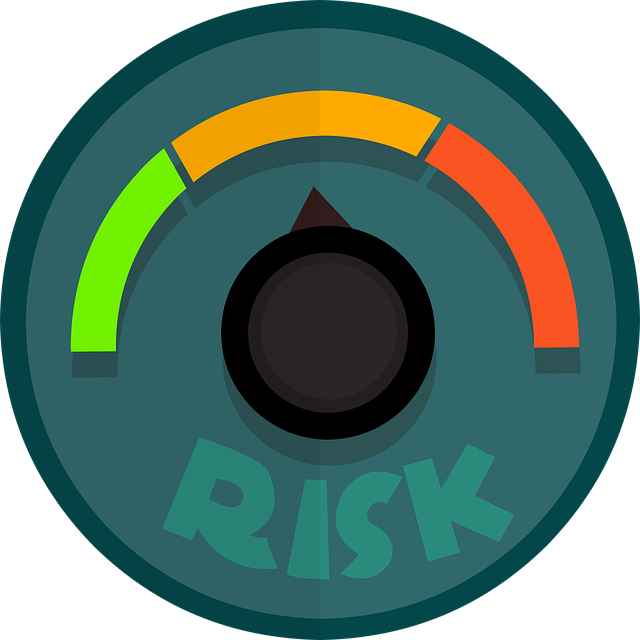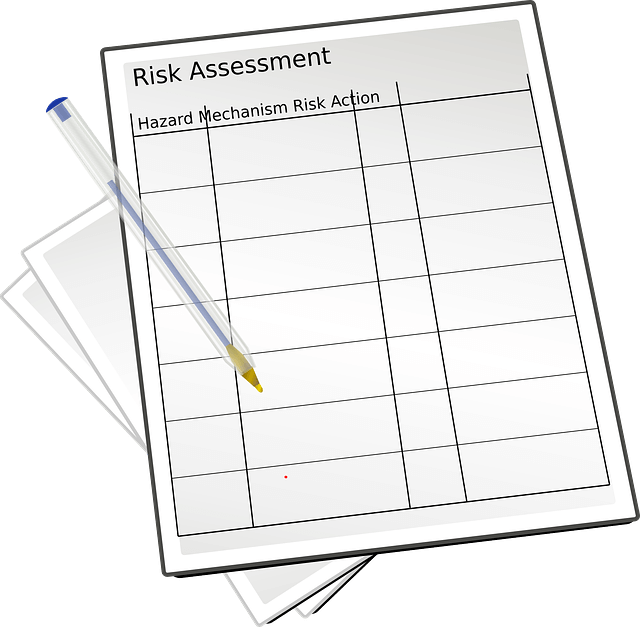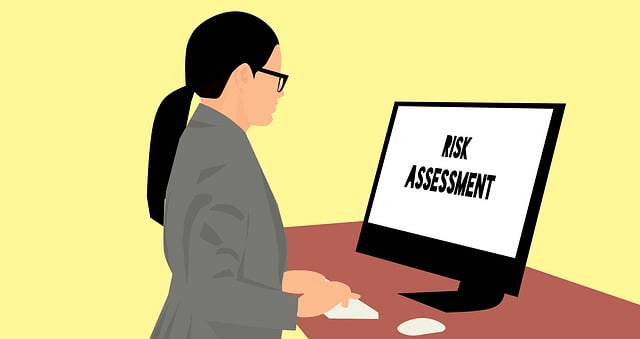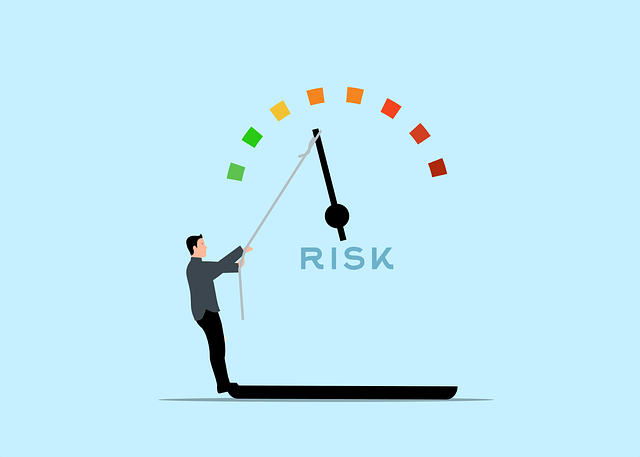What Is Fire Risk Assessment and Why Is It Essential in 2023?

What Is Fire Risk Assessment and Why Is It Essential in 2023?
A new year has arrived, and along with it, new challenges in maintaining fire safety. With rapid technological advancements and evolving building designs, understanding fire risk assessments and their importance has never been more crucial. So, what is a fire risk assessment, and why is it essential in 2023?
In this engaging and informative article, we will explore the concept of fire risk assessments, their legal requirements, how to conduct a comprehensive assessment, the importance of implementing fire safety measures, and the significance of regular monitoring and reviewing. By the end, you will have a solid understanding of fire risk assessments and how they play a vital role in ensuring building safety.
Short Summary
- Fire Risk Assessments are essential for protecting lives, reducing damages and liabilities, and ensuring legal compliance.
- Responsible persons must undertake fire risk assessments to identify potential hazards and evaluate risks associated with them.
- Fire safety measures must be implemented regularly to reduce the risk of fires occurring & minimize impact if they do.
Understanding Fire Risk Assessments

Fire risk assessments are a systematic process designed to identify potential fire hazards, evaluate the risks associated with those hazards, and propose appropriate fire safety measures to mitigate those risks. This essential fire safety measure not only helps to protect lives but also makes good business sense as it minimizes the risk of costly damages and legal penalties.
The responsible person, typically the owner or manager of the premises, carries the legal duty to ensure that a fire risk assessment is conducted and that proper fire safety provisions are in place.
Let’s dive deeper into the components of a fire risk assessment and the role of the responsible person.
Components of a fire risk assessment
The first step in a fire risk assessment is identifying potential hazards, such as combustible materials, sources of ignition, and areas where oxygen may be present in higher concentrations. A noughts and crosses system can be employed to recognize combustibles and ignition sources, and a basic single line drawing of the premises should include pertinent structural characteristics and the utilization of specific areas. This plan assists the fire service in navigating the building and fighting fires more effectively.
Once hazards are identified, the next step is evaluating the risks associated with them. This involves considering the likelihood of a fire occurring, the potential intensity of the fire, and the potential consequences to persons in the workplace. High-risk areas, such as paint spraying with highly flammable paints or locations with slower reaction times to fire alarms, should be given extra attention. Additionally, the use or storage of hazardous substances must be assessed in accordance with the Dangerous Substances and Explosive Atmospheres Regulations (DSEAR).
The role of a responsible person
The responsible person plays a crucial role in ensuring that fire risk assessments are carried out and maintained. This individual, often the owner or manager of the premises, should have a good understanding of the risks and the necessary measures to mitigate them. If they lack the confidence to complete a fire risk assessment, it is strongly recommended that they arrange for a suitably qualified or experienced person to complete the assessment on their behalf.
In the case of tower blocks and blocks of flats, the managing agent or landlord typically serves as the responsible person, accountable for common areas such as stairwells and corridors.
Legal Requirements for Fire Risk Assessments

In order to ensure the safety of building occupants and compliance with fire safety regulations, it is a legal requirement to conduct fire risk assessments for all blocks of flats and business premises. Organizations with five or more employees must also maintain a written record of their fire risk assessment, including the definition of the Responsible Person (RP) and documentation of all significant findings.
The regulatory framework governing fire risk assessments varies depending on the country and region. In England and Wales, the Regulatory Reform (Fire Safety) Order 2005 mandates that the RP of any non-domestic premises conduct a fire risk assessment, with non-compliance potentially leading to criminal prosecution and fines of up to £5,000.
Regulatory framework
The Regulatory Reform (Fire Safety) Order 2005 provides the regulatory framework for fire risk assessments in England and Wales. This legislation mandates that all non-domestic premises must have a “suitable and sufficient” fire risk assessment and must keep it up to date. Failure to adhere to this regulatory framework may result in criminal prosecution and significant fines.
In addition to the legal penalties, non-compliance with fire safety regulations can also lead to devastating consequences in the event of a fire, including loss of life, property damage, and reputational harm. Therefore, it is of utmost importance for building owners, managers, and responsible persons to ensure that fire risk assessments are conducted and maintained according to the regulatory framework.
Specific requirements for different building types
The specific requirements for fire risk assessments may vary depending on the building type and the country or region. For example, commercial buildings may necessitate additional fire safety measures such as fire doors, fire alarms, and sprinkler systems to minimize the risk of fire. Residential buildings, on the other hand, may require smoke detectors and fire extinguishers to ensure the safety of occupants.
Heritage properties, which often house priceless artifacts and historical documents, may require additional measures to protect the building and its contents from fire. This could include the installation of advanced fire detection and suppression systems, as well as the implementation of strict fire prevention protocols to minimize the risk of fire starting and spreading.
Conducting a Comprehensive Fire Risk Assessment

A comprehensive fire risk assessment should take into account the complexity of the building, its use, and any potential fire hazards. By following a systematic process, it is possible to identify risks and implement appropriate fire safety measures to minimize the likelihood of a fire occurring and its potential impact on the building and its occupants.
In order to carry out a comprehensive fire risk assessment, it is essential to have access to the right tools and resources, as well as a clear understanding of the steps involved in the process. Let’s explore these steps in more detail.
Steps for conducting a fire risk assessment
The first step in conducting a fire risk assessment is determining the scope of the assessment. This involves identifying potential fire hazards and assessing the risks associated with these hazards. It is important to consider combustible materials, inadequate fire safety measures, and inadequate fire safety systems as potential fire hazards.
Once the hazards have been identified, the next step is to evaluate the risks associated with them. This can be done by assessing the probability of a fire occurring, the potential intensity of the fire, and the potential repercussions of the fire.
After the risks have been assessed, it is essential to document the findings and take the necessary actions to address the identified risks, such as implementing fire safety measures and developing a fire safety plan.
Tools and resources
Various tools and resources are available to assist in conducting a comprehensive fire risk assessment, including the Fire Risk Assessment Prioritisation Tool, fire risk assessment templates, online risk self-assessment platforms, forms and checklists, and automatic fire risk assessment reports.
Utilizing these tools and resources can help ensure that fire risk assessments are carried out in a secure and efficient manner, providing direction and assistance to guarantee that all necessary steps are taken to minimize the risk of fire.
Choosing a Competent Fire Risk Assessor

Selecting a competent fire risk assessor is crucial in ensuring that your fire risk assessment is conducted accurately and thoroughly. A competent fire risk assessor should possess suitable education, training, and experience in fire safety and fire risk assessment principles, as well as having completed at least three fire risk assessments and possessing appropriate training records. Relevant qualifications include the Level 3 Certificate in Fire Safety (Fire Auditors), Level 4 Certificate in Fire Safety (Fire Auditors), and Level 4 Diploma in Fire Safety (Fire Auditors).
When evaluating potential fire risk assessors, it is important to verify references, request proof of qualifications and experience, and ensure that the assessor has a thorough understanding of applicable regulations and possesses the requisite knowledge and skills to conduct the assessment.
Professional qualifications
A professional fire risk assessor must have undergone comprehensive training and be knowledgeable about the most up-to-date guidelines and legal requirements, including their application to different types of buildings. Some of the key qualifications for a professional fire risk assessor include the Level 3 Certificate in Fire Safety (Fire Auditors), Level 4 Certificate in Fire Safety (Fire Auditors), and Level 4 Diploma in Fire Safety (Fire Auditors).
In addition to possessing the necessary qualifications, a competent fire risk assessor should also have extensive experience in conducting fire risk assessments across a variety of building types and industries. This ensures that the assessor has a broad understanding of the unique challenges and risks associated with each type of building and can provide tailored solutions to address these risks effectively.
Evaluating potential assessors
When evaluating potential fire risk assessors, it is essential to assess their competency, experience, and knowledge to ensure they possess the qualifications required to complete the assessment. Additionally, it is crucial to provide them with access to all areas of the premises and necessary information, as well as to verify references and request proof of qualifications and experience.
Taking these steps will help ensure that you select a fire risk assessor who is well-equipped to identify potential hazards, assess risks, and recommend appropriate fire safety measures for your building.
Implementing Fire Safety Measures

Once a fire risk assessment has been conducted, it is crucial to implement the recommended fire safety measures to minimize the risk of fire and ensure the safety of the building’s occupants. These measures may include the installation of fire alarms, sprinklers, and emergency lighting, as well as the development and implementation of a fire safety plan.
It is also important to regularly review and update the fire safety measures in place to ensure they remain effective and current. This is particularly important if there have been any changes to the building or its use, such as the introduction of new equipment or personnel.
Fire safety provisions
Essential fire safety provisions include fire alarms, sprinklers, and emergency lighting, which play a crucial role in detecting and combating fires. These provisions must be installed and maintained according to the legal requirements and guidelines set forth by the Fire Safety (England) Regulations 2022 and the Regulatory Reform (Fire Safety) Order 2005.
In addition to these provisions, it is important to ensure that fire exits and escape routes are clearly marked and unobstructed, and that staff are provided with fire safety training. Regular inspections and maintenance of fire fighting equipment, such as fire extinguishers, are also crucial to guarantee their effectiveness in the event of a fire.
General fire precautions
General fire precautions that can help minimize fire risks include good housekeeping practices and staff training. By keeping the workplace clean and uncluttered and disposing of combustible waste such as paper, cardboard, and other flammable materials, the risk of fire starting and spreading can be significantly reduced.
Staff training is another important aspect of general fire precautions. Ensuring that employees are knowledgeable about the potential fire hazards in the workplace, as well as the appropriate actions to take in the event of a fire, can help prevent fires from occurring and minimize the impact of fires that do occur.
Monitoring and Reviewing Fire Risk Assessments
Regular monitoring and reviewing fire risk assessments is essential to ensure ongoing compliance with fire safety regulations and to adapt to changes in building use or layout. It is the responsibility of the building owner, manager, or designated responsible person to ensure that fire risk assessments are kept up to date and that any necessary changes are implemented as required.
By regularly reviewing fire risk assessments and making adjustments as necessary, you can help guarantee the safety of your building’s occupants and protect your property from the potentially devastating consequences of fire.
Frequency of reviews
The frequency of reviewing fire risk assessments varies depending on the country or region. In the UK, there is no specific legal requirement for how often fire risk assessments must be done or reviewed. However, it is recommended to review the assessment at least annually and to have a professional carry out a fire risk assessment at least every 4 years.
In extreme cases, such as for the highest-risk buildings, a new fire risk assessment should be completed annually. Ultimately, the frequency of reviews should be determined by the responsible person, taking into account the unique characteristics of the building and any changes that have occurred since the original assessment.
Responding to changes
In addition to regular reviews, it is important to revise fire risk assessments in response to significant changes in building use, occupancy, or layout. This can include changes to the building’s purpose, the introduction of new equipment or materials, or alterations to the building’s structure.
By updating the fire risk assessment to reflect these changes, you can help ensure that your building remains compliant with fire safety regulations and that the risk of fire is minimized.
Summary
In conclusion, understanding fire risk assessments and their importance is crucial in maintaining fire safety within various types of buildings. By conducting comprehensive assessments, implementing appropriate fire safety measures, and regularly monitoring and reviewing the assessments, building owners, managers, and responsible persons can help ensure the safety of occupants and protect their property from the potentially devastating consequences of fire.
As we move forward into 2023, it is more important than ever to remain vigilant and proactive when it comes to fire safety. By staying informed about the latest fire risk assessment practices and regulations, you can help create a safer environment for everyone and contribute to a future where fire risks are minimized, and lives are protected.
Frequently Asked Questions
What are the 5 steps of a fire risk assessment?
Fire risk assessments involve five key steps: identification of hazards, assessing the risk associated with each hazard, implementing control measures to minimise risk, regular monitoring and reviewing of risks, and recording the assessment.
Taking the time to follow these steps is essential in ensuring a safe work environment.
What is a fire risk assessment?
A Fire Risk Assessment is a systematic approach to identifying the sources of fire risk in your premises. It involves assessing the potential hazards and risks arising from those hazards, and recommending measures to reduce the risk of harm caused by fire.
It is an important part of any organization’s fire safety system.
What are the 4 types of fire risk assessment?
The four types of fire risk assessment are Identifying Fire Hazards, Evaluating Risks, Recording Findings and Reviewing Assessments. These assessments serve to identify potential hazards that may increase the likelihood of a fire occurring and provide recommendations to minimise the risks posed by these hazards.
By using these assessments, organisations can ensure they are implementing the best practices for preventing fires.
What are the 3 aims of a fire risk assessment?
The three aims of a fire risk assessment are to identify the potential fire hazards, assess the risks they pose to people in the building, and put in place measures to reduce the risks as low as possible.
These measures should be designed to reduce the risk of a fire starting, and to ensure that people can safely evacuate the building in the event of a fire. The fire risk assessment should also consider the fire safety measures already in place, and identify any areas where additional measures may be needed.
Who is responsible for completing a fire risk assessment?
The responsibility for completing a fire risk assessment lies with the employer, owner or occupier of a premises. The responsible person needs to ensure that the assessment is completed by a competent person and that appropriate measures are taken in order to protect against fire.
Comments are closed